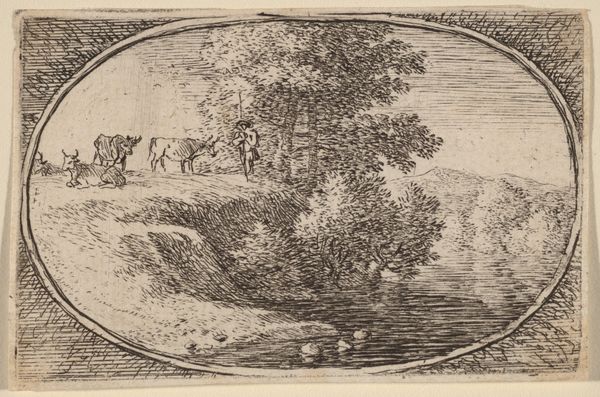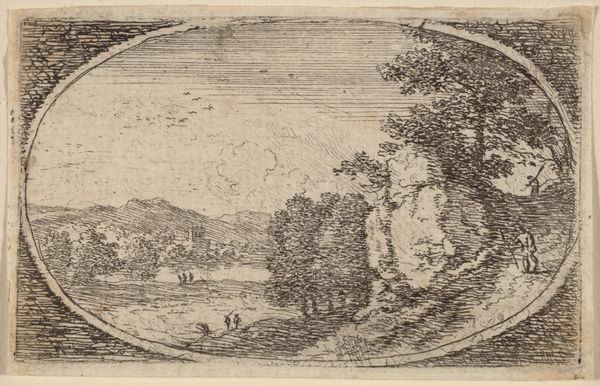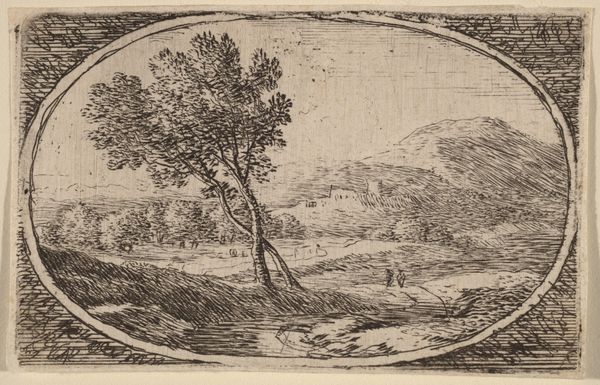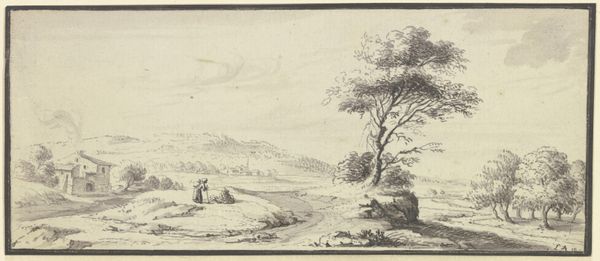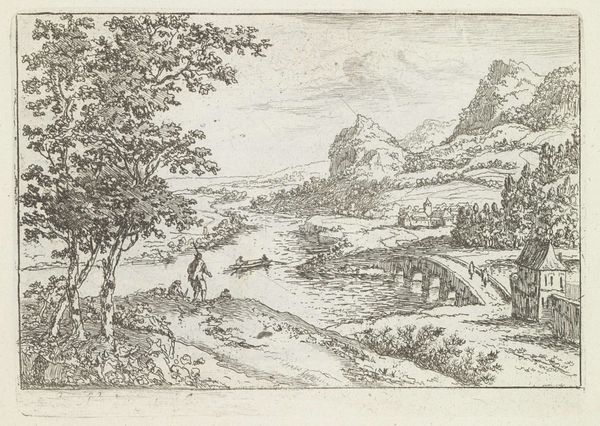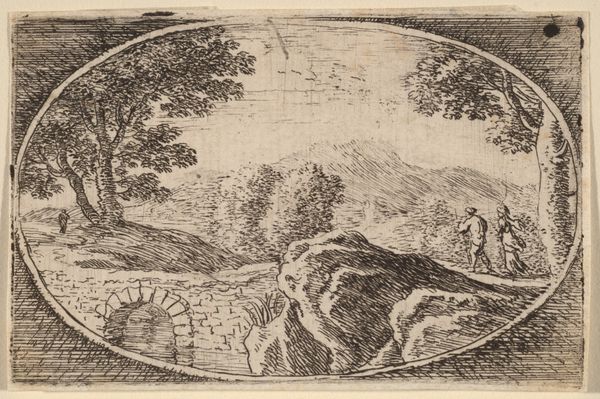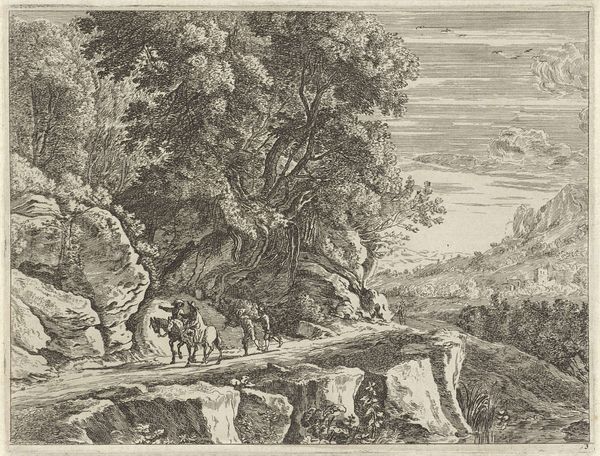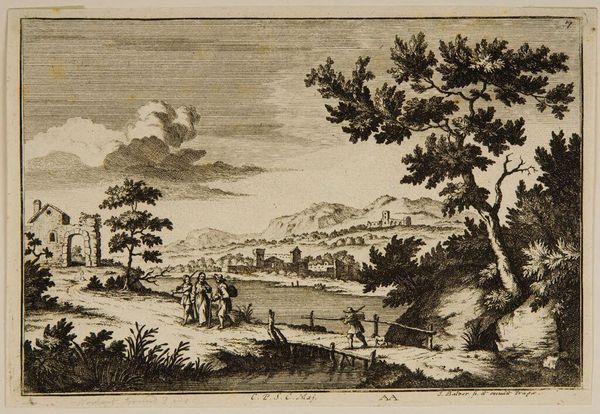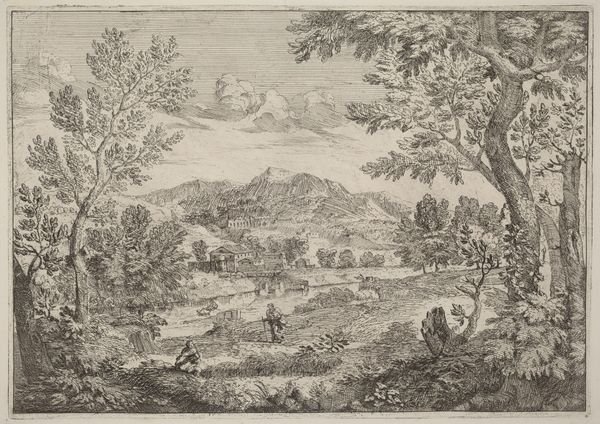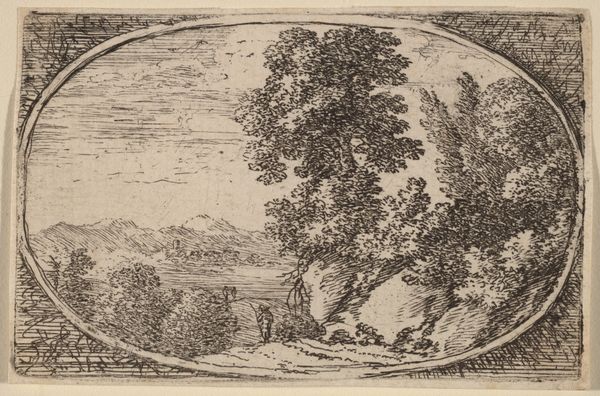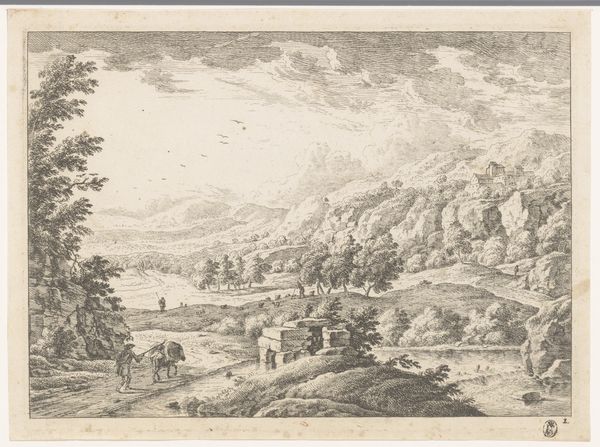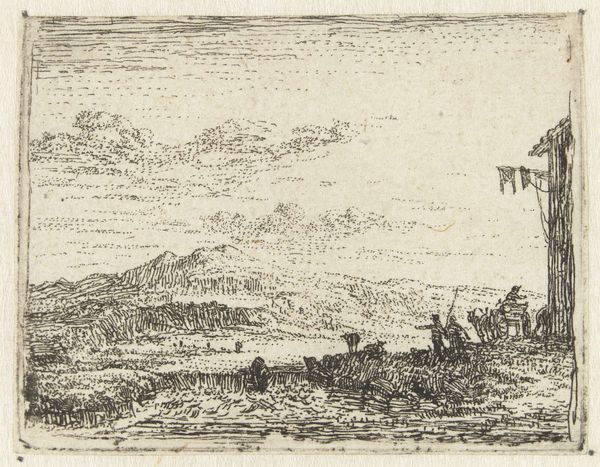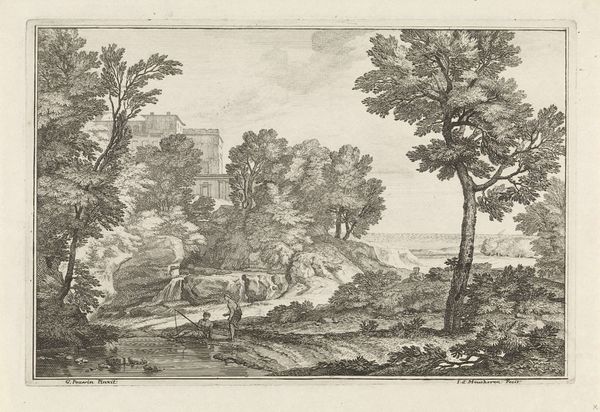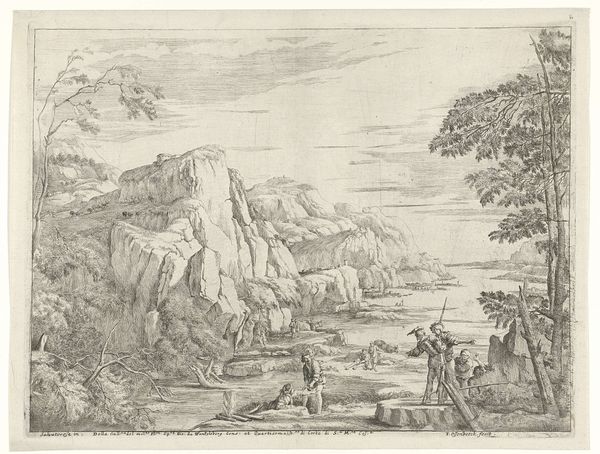
print, etching
#
dutch-golden-age
# print
#
etching
#
old engraving style
#
landscape
#
figuration
#
realism
Dimensions: height 45 mm, width 72 mm
Copyright: Rijks Museum: Open Domain
Curator: Immediately, I’m struck by the detail, or maybe its the *suggestion* of detail, achieved with what I understand is an etching. Editor: That’s right. This print, titled "Weids landschap met twee wandelaars," meaning "Wide Landscape with Two Walkers," was created by Herman van Swanevelt between 1650 and 1655. The artwork currently resides here at the Rijksmuseum. Curator: It possesses an intimate, almost miniaturist quality because of the small format, but the scene itself implies vastness; what appears to be rolling countryside extending towards distant hills capped by a crumbling structure. Are they ruins? Editor: Likely. Van Swanevelt, like many artists of the Dutch Golden Age, often used ruins as symbols of mortality and the transient nature of human achievement. The two figures walking in the foreground certainly give a sense of scale to the surrounding terrain. The composition invites viewers to see this landscape as an invitation to explore both nature and the past. Curator: Absolutely, I sense a delicate tension between the fleeting presence of man against nature's enduring grandeur and permanence. The choice of rendering the image in an oval is so interesting here... does this compositional element introduce something more symbolic, more psychological to our perception of it? It feels to me a bit like a memory bubble, and in some way, a universal tale... Editor: That's perceptive. The oval cartouche often suggests an enclosed or idealized view, focusing the viewer's attention. Moreover, it could also refer to earlier, more aristocratic print traditions, while portraying a scene that is comparatively quotidian with those of the higher classes. So a double meaning can be assumed to co-exist, there. Curator: A truly remarkable capture of humanity's interaction with its environment. Editor: Agreed. It's an exquisite example of how formal elements contribute to the overarching themes and the artist's ability to tell a complete visual story in a very minimal format.
Comments
No comments
Be the first to comment and join the conversation on the ultimate creative platform.
